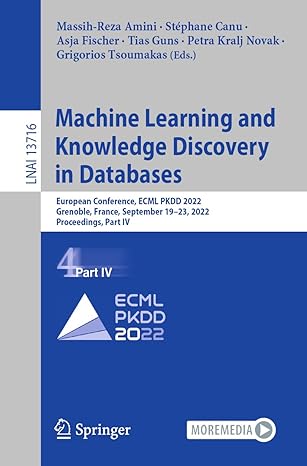Question
P13 - Linked Lists Objectives of this Assignment Practice implementing Linked List methods Implement a simple book system Description In this assignment we will implement
P13 - Linked Lists
Objectives of this Assignment
- Practice implementing Linked List methods
- Implement a simple book system
Description
In this assignment we will implement a singly linked list class to get a better understanding of this reference-based data structure. The interface you will implement is very similar to that provided by ArrayLists, but the way in which they are implemented is very different.
Phase 1 - Build the project
You should have built the project in recitation. If you didn't, please perform Recitation 20.
Phase 2 - File Descriptions
Book.java
Book.java is nothing out of the ordinary - it's just keeps track of the book's title and its author, as well as the number of pages. It has a few getter and setter methods, but overall this class is very straight forward.
BookNode.java
BookNode.java is a little more interesting. A BookNode is an object that stores a Book in its book instance variable, and has a reference to the next BookNode in its next instance variable. If the node is the last one in the sequence, its next variable will be set to null. There are also methods for setting the next node and getting the next node, as well as a method for returning the book that the node contains.
LinkedBookList.java
Now let's look at the LinkedBookList class. You'll see that the instance variables for this are very simple. Only a BookNode called head, which refers to the first item, and an int to keep track of the size of the linked list. This is all we need, since each element contains a reference to the next one.
R20.java
R20.java is your test program to run and add test cases to.
Phase 3 - Implementation
Your task is to implement the missing add, totalPages, and remove methods per the instructions.
All these methods will require you to iterate through the list. You can do this either with a while loop or a for loop. If using a for loop, think what are the three components that make up the loop:
(initialization; are we done?; operation to reach the next item)
Many of the operations that we are trying to implement here, can be reasoned through by drawing pictures. Use that to reason how far to go, when to set which pointers, and when to delete pointers.
My Recitation project code for Lab20
public class LinkedBookList {
Step by Step Solution
There are 3 Steps involved in it
Step: 1

Get Instant Access to Expert-Tailored Solutions
See step-by-step solutions with expert insights and AI powered tools for academic success
Step: 2

Step: 3

Ace Your Homework with AI
Get the answers you need in no time with our AI-driven, step-by-step assistance
Get Started


